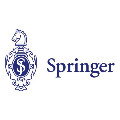Benefiting from huge bandwidth resources, millimeter-wave (mmWave) communications provide one of the most promising technologies for the fifth-generation wireless networks. To compensate for high pathloss of mmWave signals, large antenna arrays are equipped at base stations and user equipment to establish directional beamforming, where beam management is adopted to acquire and track the optimal beam pair with the maximum received power. Naturally, narrow beams are expected to achieve larger beamforming gain, whereas it could impose enormous training overhead and high sensitivity to blockages. Fortunately, the amazing success of deep learning (DL) has stimulated increasing interest in applying it to address those issues. In this article, we first elaborate the motivations of applying DL in beam management. Then, the current state-of-the-arts are reviewed, where their research routes and key features are discussed. Finally, challenges and future opportunities are summarized, highlighting DL design insights and novel beam management mechanisms. We hope this article can stimulate more striking ideas and exciting contributions for DL assisted beam management.
翻译:利用巨大的带宽资源,千兆瓦通信为第五代无线网络提供了最有希望的技术之一。为了补偿毫米Wave信号的高病理损失,在基地站配备了大型天线阵列,并配备了用户设备,以建立方向波形,采用梁管理,以获取和跟踪最佳的梁对与最大获得的功率。自然,窄梁可望取得更大的波形增益,但可能会造成巨大的培训间接费用和对阻塞的高度敏感性。幸运的是,深造(DL)的惊人成功激发了人们越来越有兴趣应用它来解决这些问题。在本篇文章中,我们首先阐述了在光束管理中应用DL的动机。然后,对目前的状况进行了审查,讨论其研究路线和关键特征。最后,总结了挑战和未来的机会,突出DL设计洞察和新光束管理机制。我们希望这篇文章能够激发出更惊人的想法,并为DL协助的波束管理做出令人兴奋的贡献。




